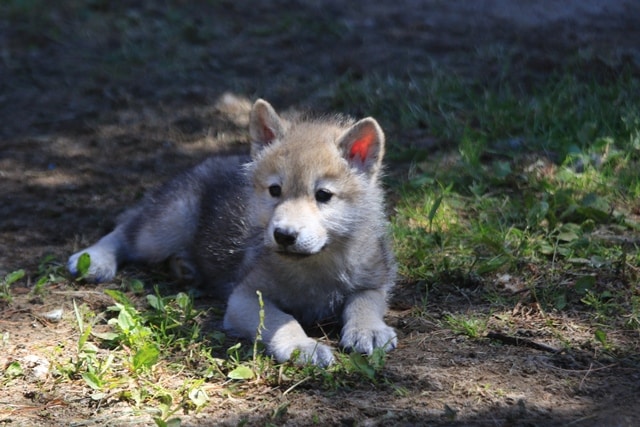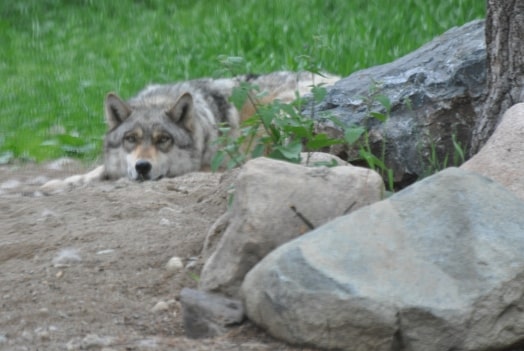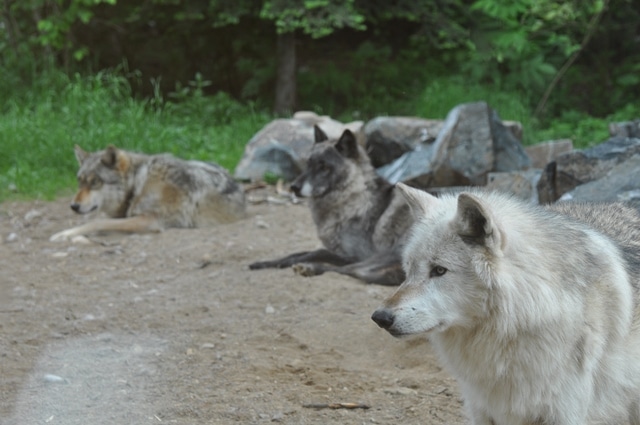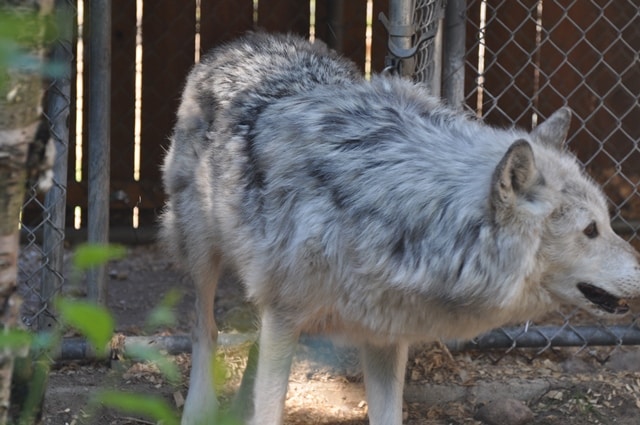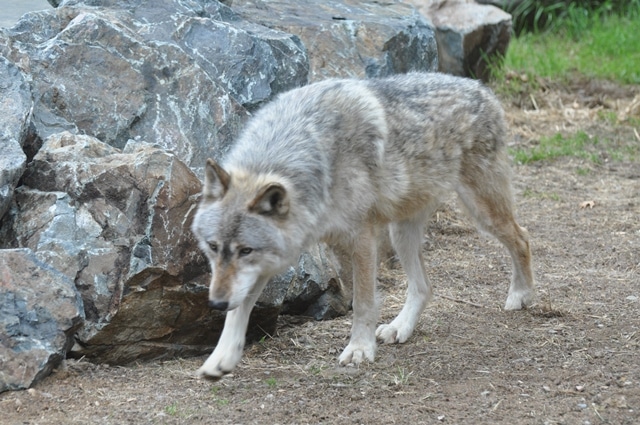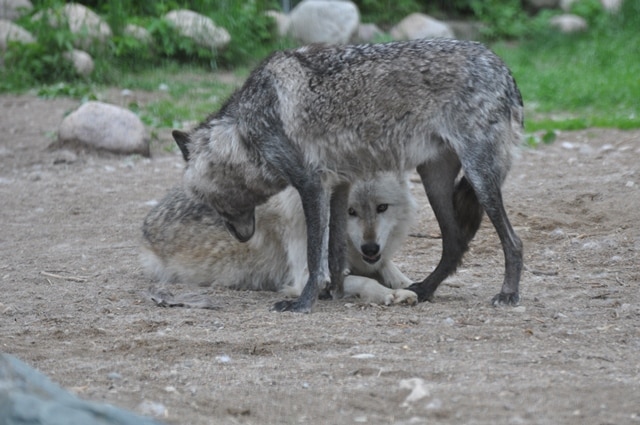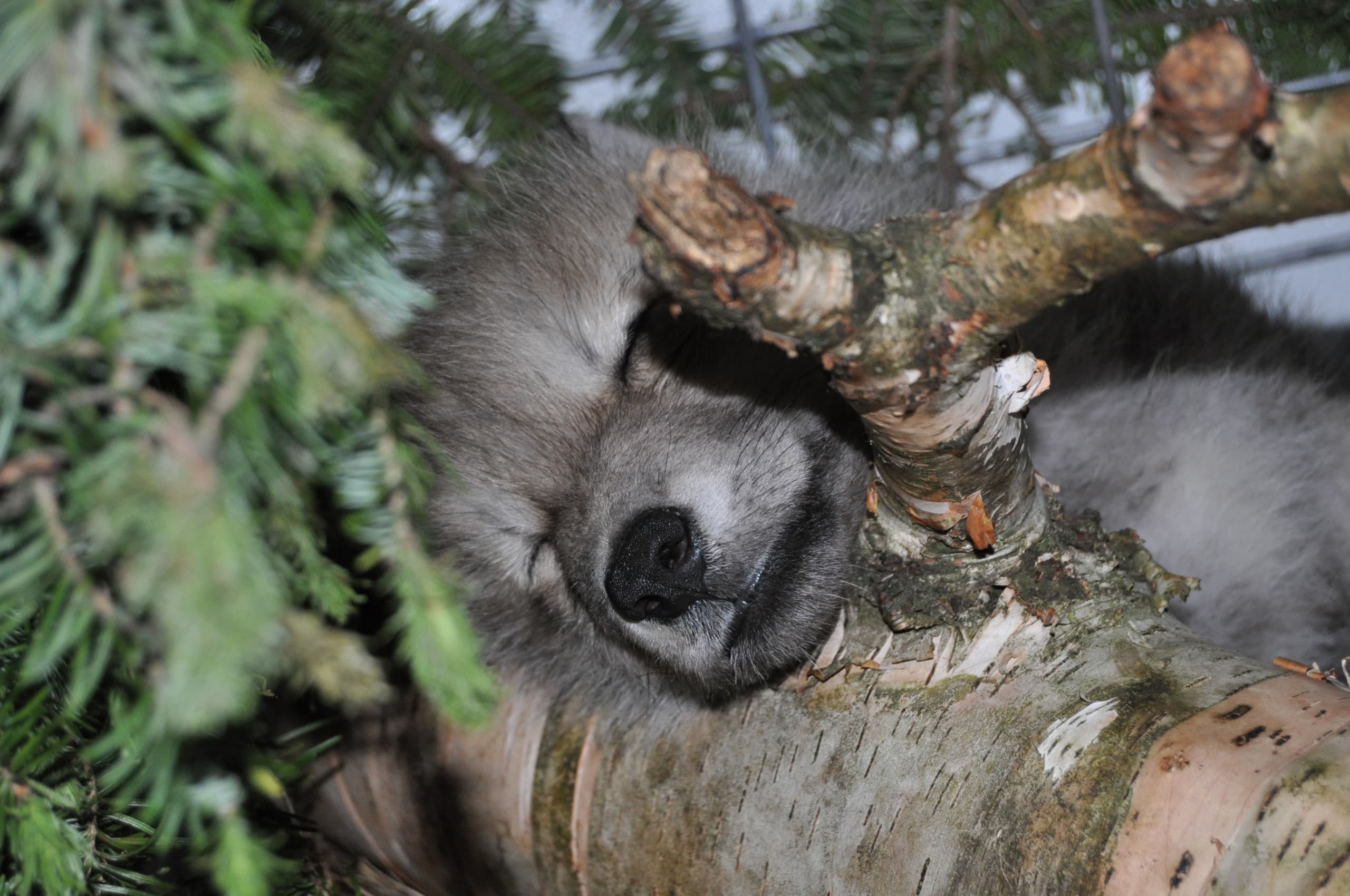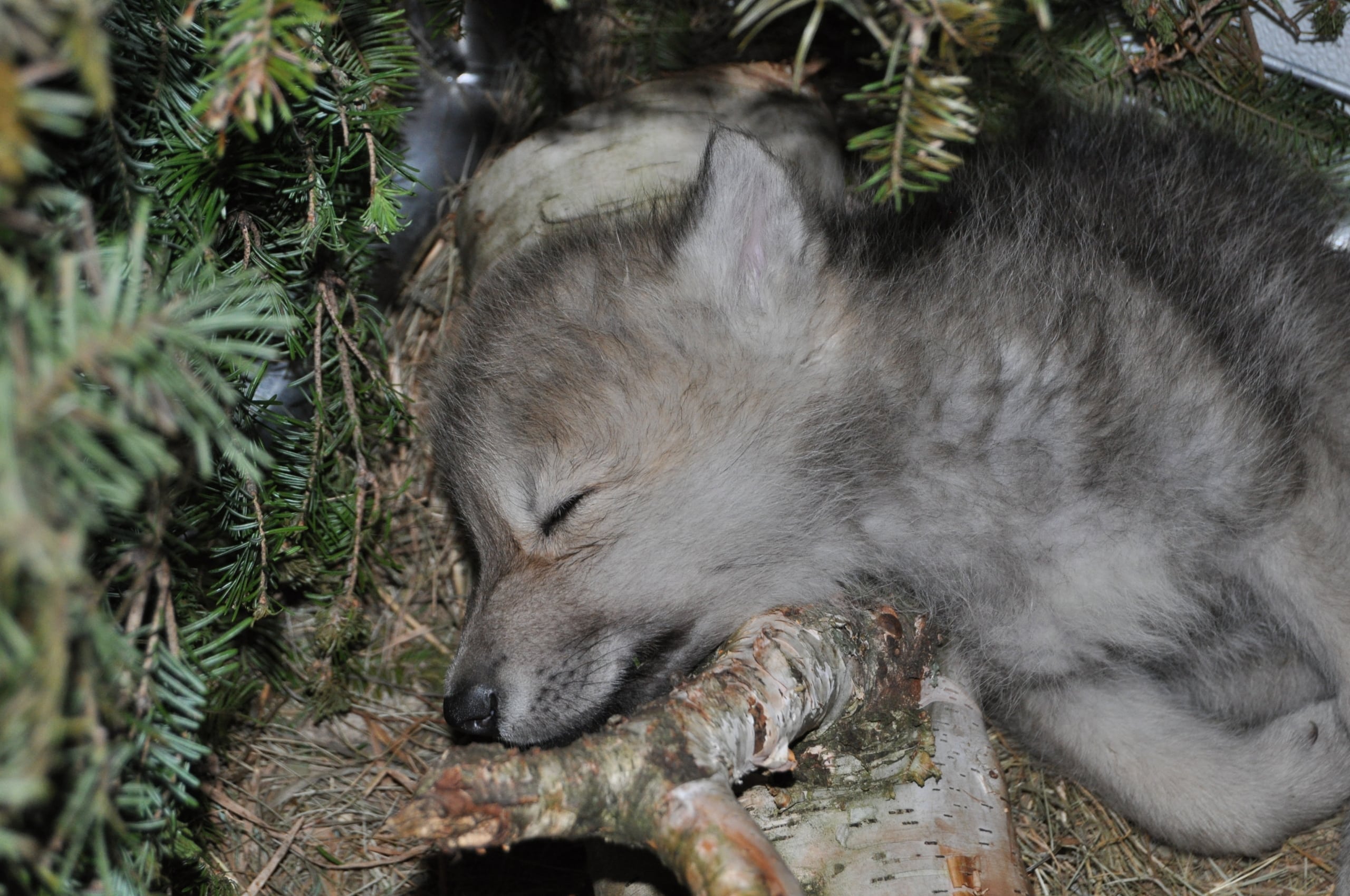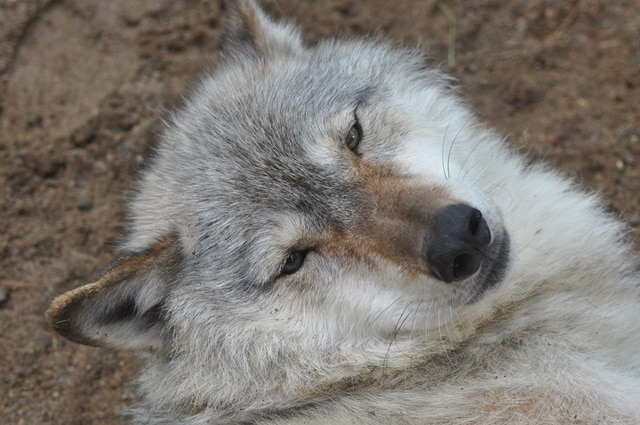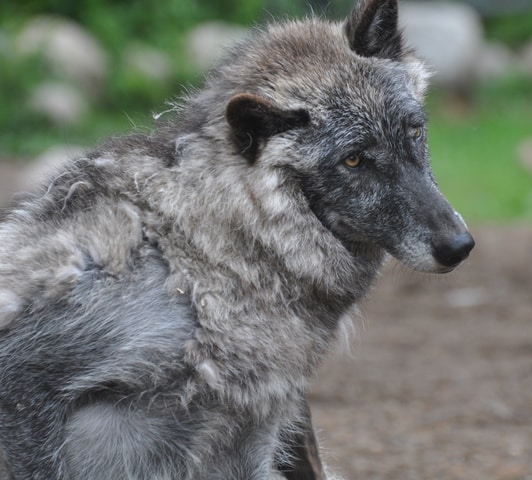Axel had a negative response to a situation in the 10 am program yesterday and started to show some anxiety with the auditorium programs. (Grayback is doing well even though he tended to be the shyer in other interactions.) This is not uncommon at this age, the wolf pups hearing and vision starts to increase, so they can hear more and see farther, extending their horizons and giving them more things to process. It’s the Pup Care team’s job to help Axel work through this anxiety. How did they solve it? They chose to bring a deer leg as a distraction during programs to help him focus on something other than the sights and sounds of the auditorium and it worked. This is part of the socialization process and the training that is instilled in the Pup Care Team members. Things are changing daily with the pups, we need to be creative, and be quick to identify a response before it escalates… From my experience, this is the most challenging age for fear responses, but it is the most important time to introduce a wide variety of stimuli under controlled circumstances. Every time we work with pups, we are reminded how valuable it is to have an adult wolf that deals with humans, equipment, noise, etc. In the next few weeks, we start getting the pups familiar with the sound of weed eaters, chainsaws, construction equipment etc. All part of life on a captive exhibit.
The pups are adapting to a change in their diet to a gruel mix of two different types of meat and some meat based dog food to ensure they get all the nutrients necessary for a growing body. Their diet must be a success; Axel gained .6 lbs in the last 24-hours going from 8.7 lbs to 9.1 lbs.

